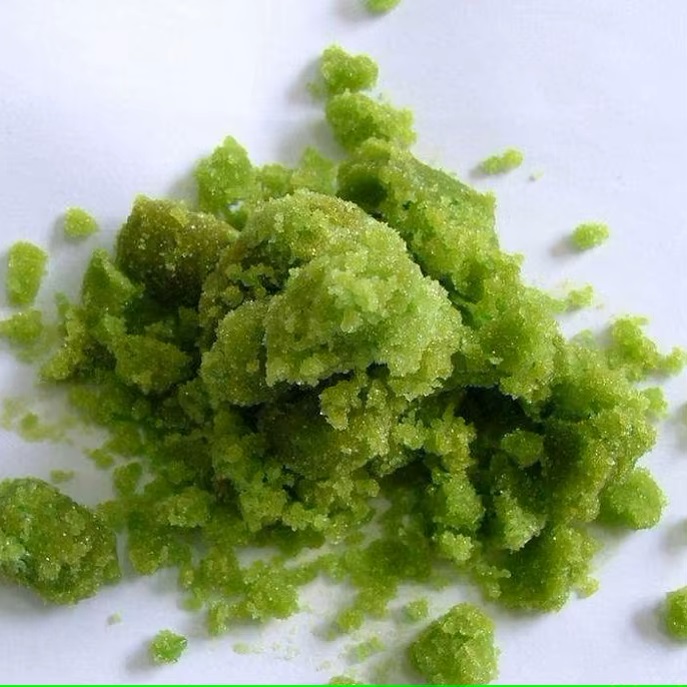Construction, Mining, Metal
Do you have questions?
We unleash your business potential by maximize the business innovation.
Send EmailFerrous chloride tetrahydrate, Iron Chloride Dihydrate, Iron chloride tetra hydrate, Iron(Ii) Chloride Tetrahydrate, 13478-10-9
Ferrous chloride tetrahydrate
CAS: 13478-10-9
Molecular Formula: Cl2FeH2O
Names and Identifiers
| Name | Ferrous chloride tetrahydrate |
| Synonyms | Ferrous Chloride Iron(2+) Dichloride Iron Chloride Dihydrate IRON (II) CHLORIDE 4H2O Iron(Ii)Chloride Hydrate Ironchloridetetrahydrate Ferrous Chloride, Hydrated Irondichloridetetrahydrate Iron(Ii) Chloride N-Hydrate Ferrous chloride tetrahydrate Iron(Ii) Chloride Tetrahydrate Ferrous Chloride, Tetrahydrate, GR IRON(II) CHLORIDE TETRAHYDRATE FOR ANALY |
| CAS | 13478-10-9 |
| EINECS | 603-870-5 |
| InChI | InChI=1/ClH.Fe.4H2O/h1H;;4*1H2/q;+2;;;;/p-1 |
| InChIKey | WSSMOXHYUFMBLS-UHFFFAOYSA-L |
Physico-chemical Properties
| Molecular Formula | Cl2FeH2O |
| Molar Mass | 144.76 |
| Density | 1.93 |
| Melting Point | 105 °C |
| Boling Point | 1026 °C |
| Water Solubility | soluble |
| Solubility | 1600g/l |
| Vapor Presure | 10 mm Hg ( 693 °C) |
| Appearance | Bright green crystal |
| Specific Gravity | 1.93 |
| Color | Yellow to green |
| Exposure Limit | ACGIH: TWA 1 mg/m3NIOSH: TWA 1 mg/m3 |
| Merck | 14,4043 |
| PH | 2.5 (100g/l, H2O, 20℃) |
| Storage Condition | Store at +15°C to +25°C. |
| Stability | Air, moisture and light-sensitive. Incompatible with strong oxidizing agents, most common metals. |
| Sensitive | Air Sensitive |
| MDL | MFCD00149709 |
| Physical and Chemical Properties | Vapor pressure: 10mm Hg ( 693 ℃) WGK Germany:1 RTECS: no560000 |
| Use | Reducing agent, sewage treatment, selenium detection. Also used in agate dyeing, chemical catalyst, mordant, metallurgical electroplating. |
Risk and Safety
| Risk Codes | R22 - Harmful if swallowed R38 - Irritating to the skin R41 - Risk of serious damage to eyes R34 - Causes burns |
| Safety Description | S26 - In case of contact with eyes, rinse immediately with plenty of water and seek medical advice. S39 - Wear eye / face protection. S45 - In case of accident or if you feel unwell, seek medical advice immediately (show the label whenever possible.) S36/37/39 - Wear suitable protective clothing, gloves and eye/face protection. |
| UN IDs | UN 3260 8/PG 3 |
| WGK Germany | 1 |
| RTECS | NO5600000 |
| FLUKA BRAND F CODES | 3-23 |
| TSCA | Yes |
| HS Code | 28273300 |
| Hazard Class | 8 |
| Packing Group | III |
| Toxicity | LD50 orally in Rabbit: 450 mg/kg |
Introduction
Easy to deliquesce, easily oxidized in the air, soluble in water and alcohol.
Reference Information
| use | reducing agent, sewage treatment, selenium detection. Also used in agate dyeing, chemical catalyst, mordant, metallurgical electroplating. |
| production method | 1. first prepare hydrochloric acid solution of about 27% with hydrochloric acid with relative density of 1.18, then slowly add iron filings for reaction. When hydrogen is no longer generated, cool, filter, add some small iron flakes washed on the stool surface to the filtrate to prevent chlorination of ferrous chloride, then heat, evaporate and concentrate to the crystalline film, filter while hot, and the filtrate is cooled and crystallized, The following is quickly dried to produce ferrous chloride crystals. Anhydrous ferrous chloride can be prepared by reacting iron and gaseous hydrogen chloride under 900 oC. 2. Ferrous chloride tetrahydrate can be prepared by dissolving iron in hydrochloric acid at a temperature above 12.3 ℃ and under anaerobic conditions. |
| category | corrosive substance |
| toxicity classification | poisoning |
| acute toxicity | abdominal cavity-mouse LD50: 92.5 mg/kg |
| flammability hazard characteristics | flammability; fire scene decomposition of toxic iron oxides and chloride smoke |
| storage and transportation characteristics | warehouse low temperature, ventilation, drying |
| fire extinguishing agent | water, carbon dioxide, dry powder, sand |
| occupational standard | TWA 1 mg (iron)/m3 |

